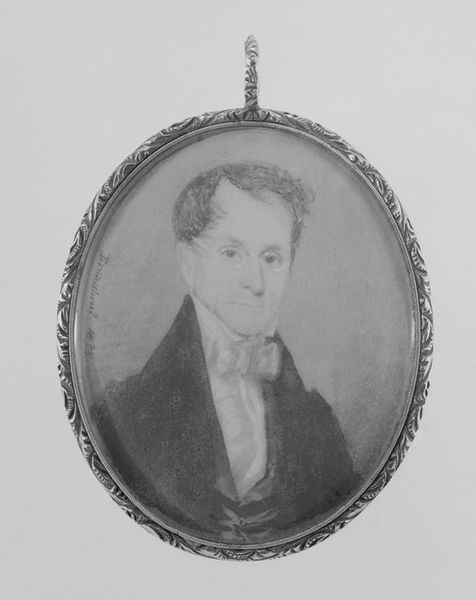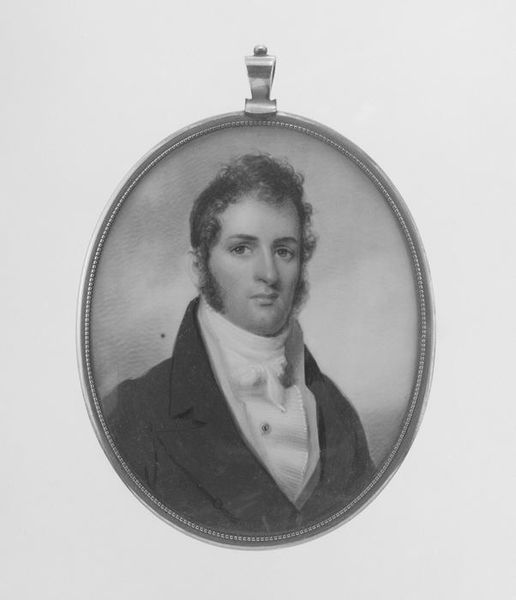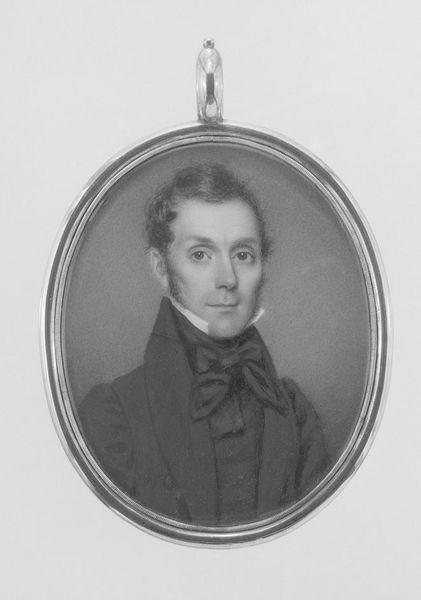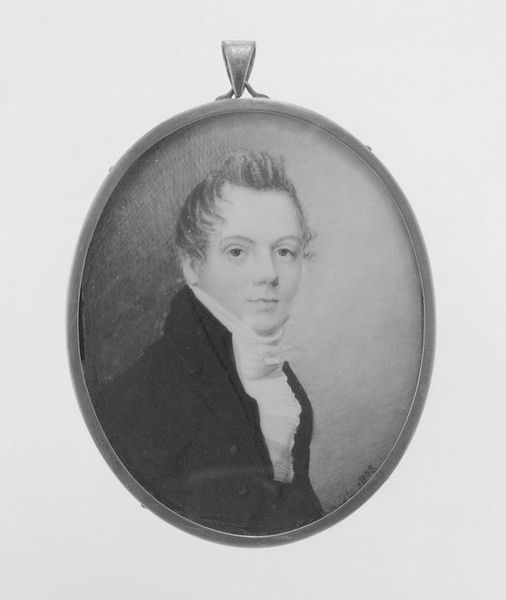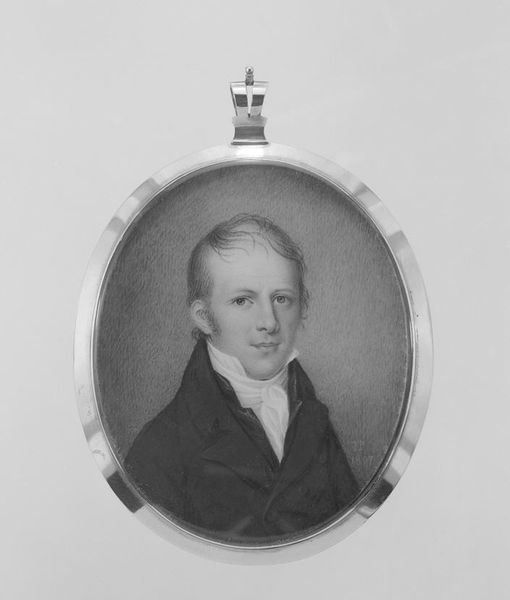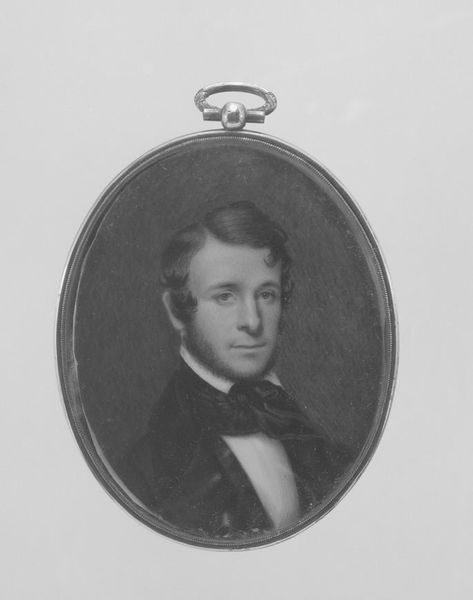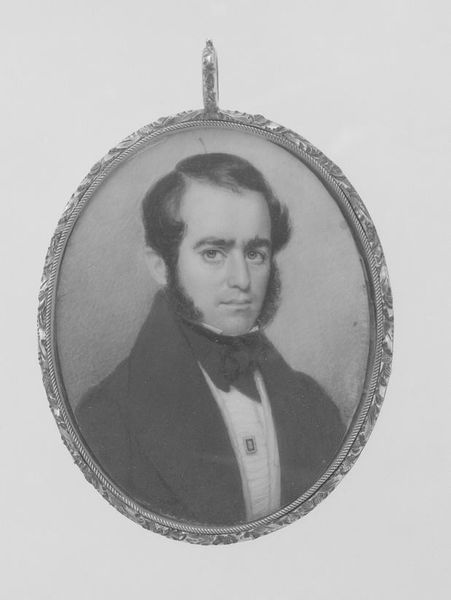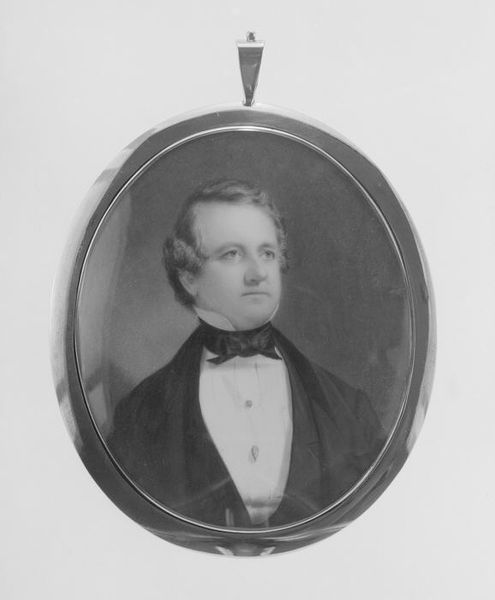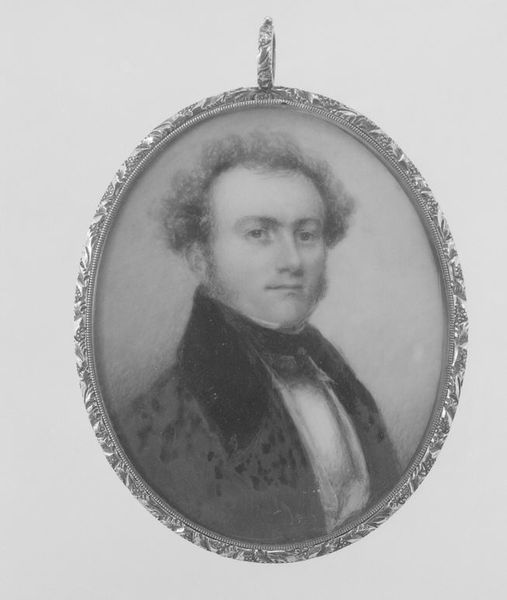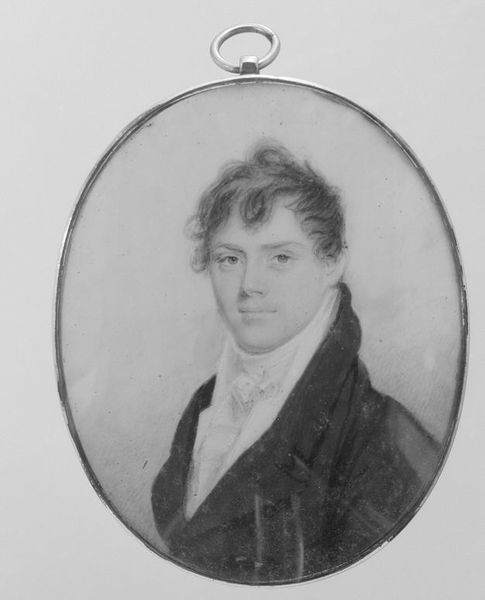
drawing, paper, pencil
#
portrait
#
drawing
#
neoclacissism
#
paper
#
black and white
#
pencil
Dimensions: 3 x 2 7/16 in. (7.6 x 6.1 cm)
Copyright: Public Domain
Editor: So, this is "Portrait of a Gentleman," a drawing from 1814 by William M. S. Doyle, rendered in pencil on paper. It's striking how crisp and detailed the portrait is, despite being a monochrome drawing. What jumps out at you when you look at this piece? Curator: I'm immediately drawn to the materiality and labor embedded within this "simple" drawing. Consider the origin of the pencil itself: mined graphite, meticulously shaped and encased in wood, reflecting specific resource extraction and industrial processes of the early 19th century. How do those material realities inflect our understanding of the "gentleman" depicted? Editor: That’s interesting. I was focused on the sitter's expression and the artist's skill. How does focusing on the pencil, rather than the image, change things? Curator: By foregrounding the means of production, we question the supposed neutrality of portraiture. Who had access to these newly available materials? How did the ease of pencil drawing democratize or complicate portraiture practices previously reliant on painting and more laborious processes? Notice the gentleman's crisp uniform. How do materials and manufacturing define this image? Editor: So, you are saying that this seemingly simple pencil drawing also signifies technological progress. I hadn't thought about that. Curator: Precisely. Think about how the portability of pencils allowed for the rapid sketching of portraits and scenes. Was Doyle selling multiples, or commissioned only for a few portraits? What did Doyle's commission cost and how was this related to the labor necessary to get all the necessary tools and products for him to perform as a portraitist? Editor: That gives me so much to consider! I can see now how the material origins of the piece, and even the status of the artist can influence our viewing experience. Thanks! Curator: Indeed, focusing on process helps unravel the complex economic and social contexts embedded in seemingly straightforward images, allowing us to explore inequalities of production and consumption.
Comments
No comments
Be the first to comment and join the conversation on the ultimate creative platform.
